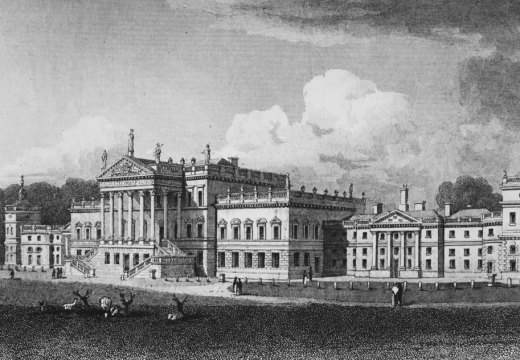When the Imperial War Museum decided to devote an exhibition to the history of anti-war protest there was some nervousness this wouldn’t go down too well. Would lifelong peace campaigners really want to see their lives and personal artefacts appear in a museum devoted to war? Would servicemen and women be happy seeing the deeds of pacifists given such prominence in a space usually dedicated to soldiers? They needn’t have worried. One of the many things People Power: Fighting For Peace does very well is narrow the conflict zone between soldier and pacifist.
It does this in many ways. One is by telling the stories of conscientious objectors (COs) who still served during wartime in auxiliary roles, such as John Bridge who won medals for bomb disposal in the Second World War. In a letter by A.A. Milne, we see how pacifists were challenged by the rise of Hitler, accepting perhaps that convictions could sometimes be put aside. Alternatively, the life of Siegfried Sassoon (whose poetry features here) shows a soldier turning against war and suffering for it. Most powerful of all is the film of three ex-servicemen, unmistakable in bearing and attitude, standing outside Downing Street, delivering anti-war speeches and dashing their medals to the ground before walking away. Film does not always work well in a museum exhibition, partly because it forces the visitors to adapt to somebody else’s rhythm, but this one is worth your time.
It demonstrates also the way the IWM excels at using stories of individuals to humanise major issues, in this case conflicts that are emotional and personal rather than physical and global. The exhibition is crammed with letters, postcards, photos and letters, each telling of the anguish faced by men and women as they wrestled with their convictions in the face of contempt. Early on, we see the white feather – an accusation of cowardice – sent to Bernard Taylor, a CO and art critic at the Manchester Guardian. The carnage of the Western Front meant that later COs were treated with more respect.
The exhibition features a letter written in 1945 by Yes, Minister actor Paul Eddington, a Quaker who registered as a CO when he was called up. Some characters recur: Bertrand Russell, a CO in the First World War, is also photographed with shock of white hair at an anti-nuclear protest in Trafalgar Square in the 1960s. There’s also the incredible MP Fenner Brockway, who spoke against the First World War and was still going at Greenham Common in the 1980s. Like many First World War COs, Brockway was treated poorly by the authorities, something the exhibition does not gloss over.

‘Embrace the Base’: 30,000 women link hands, completely surrounding the nine mile perimeter fence at RAF/USAF Greenham Common, Berkshire (1982) © Edward Barber
The ephemera provides detailed context and the constant soundtrack of people protesting makes an interesting aural companion, but this is also a very visual exhibition, showing the art of protest in banners and paintings. CRW Nevinson’s The Doctors is one striking early piece, a sort of cartoonishly cubist depiction of soldiers patched up after a battle. One man is having his back bandaged, and bends over, baring his naked backside to the viewer. Two huge banners by John Hargrave, who founded the pacifist scouting movement Kindred of the Kibbo Kift, are also of note: in one, ‘Life Or Death’ is written over a gasmasked, dehumanised figure who looks like something out of Star Wars.
It’s this graphic – in every sense – response to war that defines so much protest art, most notably in the macabre, skull-laden creations of the brilliant anti-nuclear campaigner Peter Kennard, whose early works hangs next to a banner painted by Kenneth Hockney (father of David). This reaches a climax with David Gentleman’s anti-Iraq art in 2002, with its ubiquitous and casual splatter of blood like something from Reservoir Dogs. It feels like the industrialisation of peace, a passive aggressive conclusion to a thoughtful and moving exhibition.
‘People Power: Fighting for Peace’ is at the Imperial War Museum, London, until 28 August 2017.
Unlimited access from just $16 every 3 months
Subscribe to get unlimited and exclusive access to the top art stories, interviews and exhibition reviews.
















![Masterpiece [Re]discovery 2022. Photo: Ben Fisher Photography, courtesy of Masterpiece London](http://www.apollo-magazine.com/wp-content/uploads/2022/07/MPL2022_4263.jpg)
It’s time for the government of London to return to its rightful home